The Polaroid Go is officially the world's smallest analogue instant camera, and the new baby of the Polaroid line-up.
But being small in stature doesn't mean the new arrival is necessarily inferior to the full-size Polaroid Now from 2020. The two share plenty of features and shooting modes, plus they have a very similar design.
Choosing between the pair isn't exactly straightforward, though, as they each have positives and negatives that will appeal to different kinds of photographers.
As we'll discover, the Polaroid Go is more portable, but the Polaroid Now's more familiar I-Type film is a lot more flexible. Here's how two of the best instant cameras compare in a head-to-head.
- These are the best instant cameras you can buy right now
- Check out our in-depth Polaroid Go review
- Discover the best film cameras in the world
Polaroid Go vs Polaroid Now: which is the best for you?
1. Size
Placed side-by-side, it's impossible not to notice the vast difference in dimensions between the full-size Polaroid Now and the diminutive Polaroid Go. The former measures 94x112x150mm (3.7x4.4x5.9in) and weighs 434g without a film pack inserted. Combined with the cube-like shape, it can be a little cumbersome to hold, especially for children.
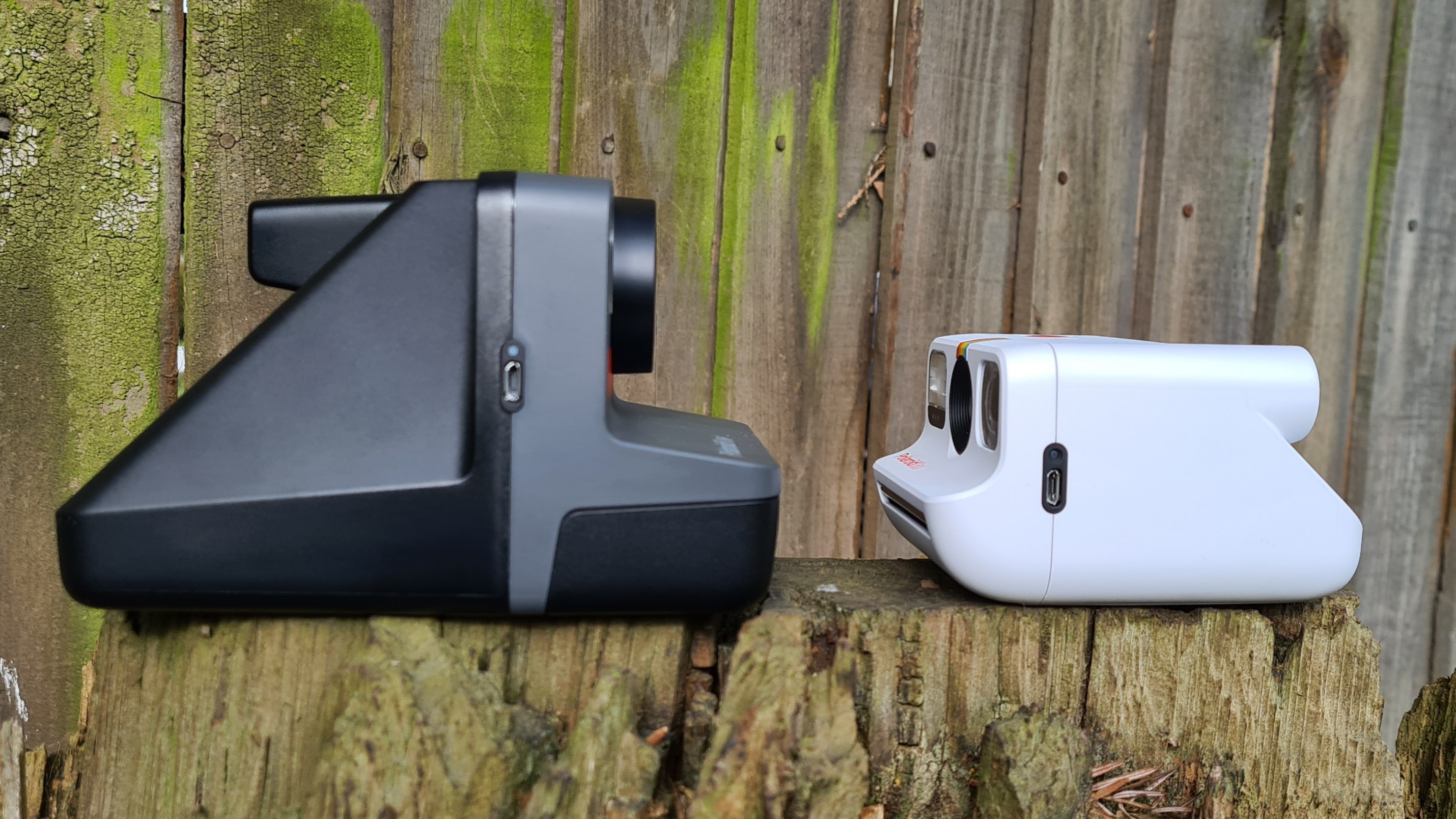
The Polaroid Go happily sits in the palm of one hand at 105x84x61mm (4.1x3.3x2.4in), and weighs 242g without a film pack. This is comfortably small enough to use one-handed, and it will even fit in a jacket pocket for easy transportation, so you're more likely to carry it around for spur-of-the-moment type snaps than the bulky Polaroid Now.
2. Film
The scaled-down Polaroid Go has its own bespoke film type, which is significantly smaller than the I-Type film used by the Polaroid Now. Each photo is 6.7x5.4cm (2.6x2.1in) and has a 4.7x4.6cm (1.9x1.8in) image area.
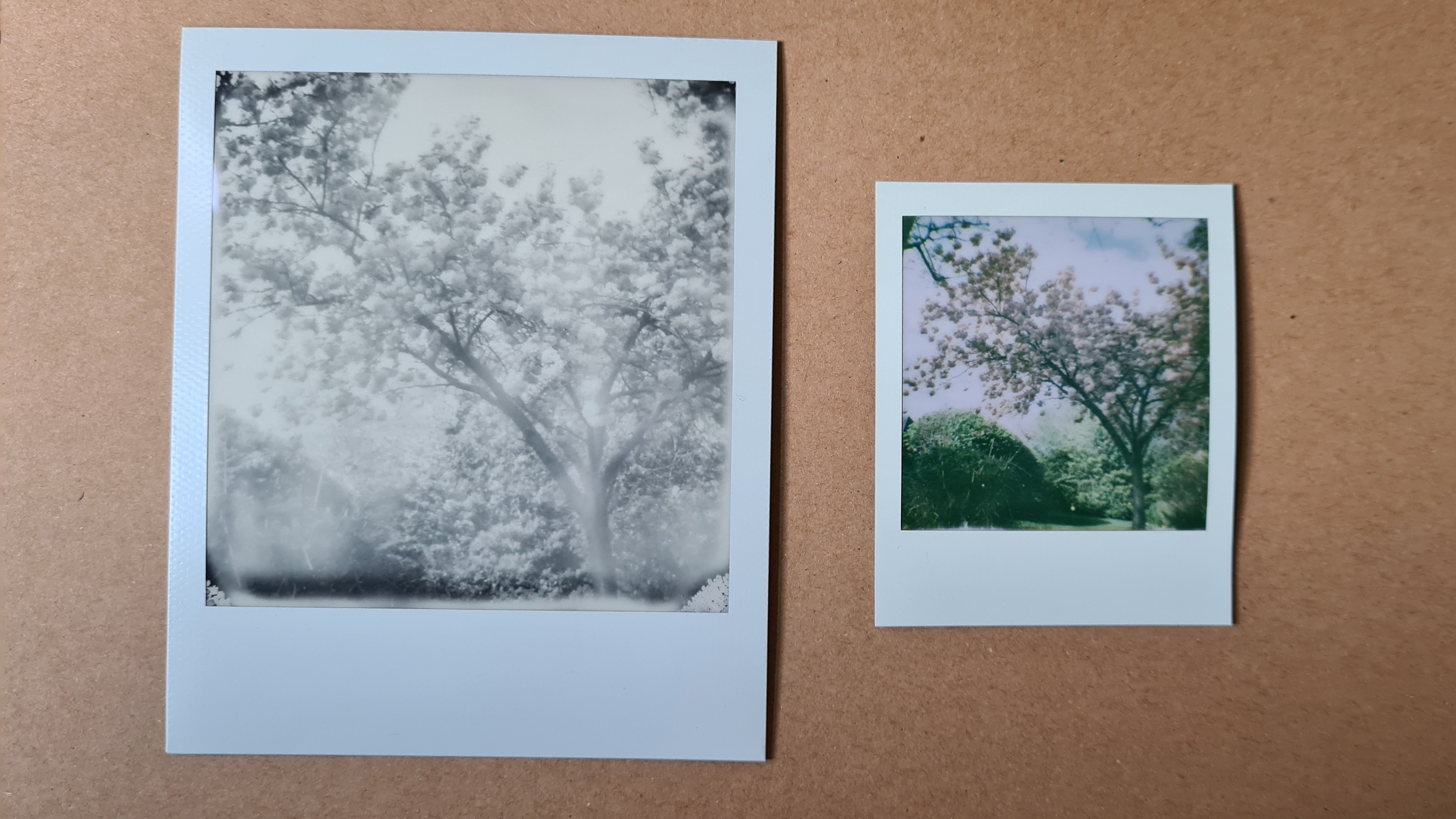
Larger I-Type photos are 10.7x8.8cm (4.2x3.4in), with an image area of 7.9x7.7cm (3.1x3.0in). I-Type is one of the largest instant film formats currently on sale.
Each film pack contains eight shots, but Go film is currently only available in double-packs, costing around £19/$20, and can only be bought as color film. I-Type is sold in both color and monochrome, with a range of different border colors. Each pack costs around £15/$16, with various multipack offers giving a slight per-photo discount.
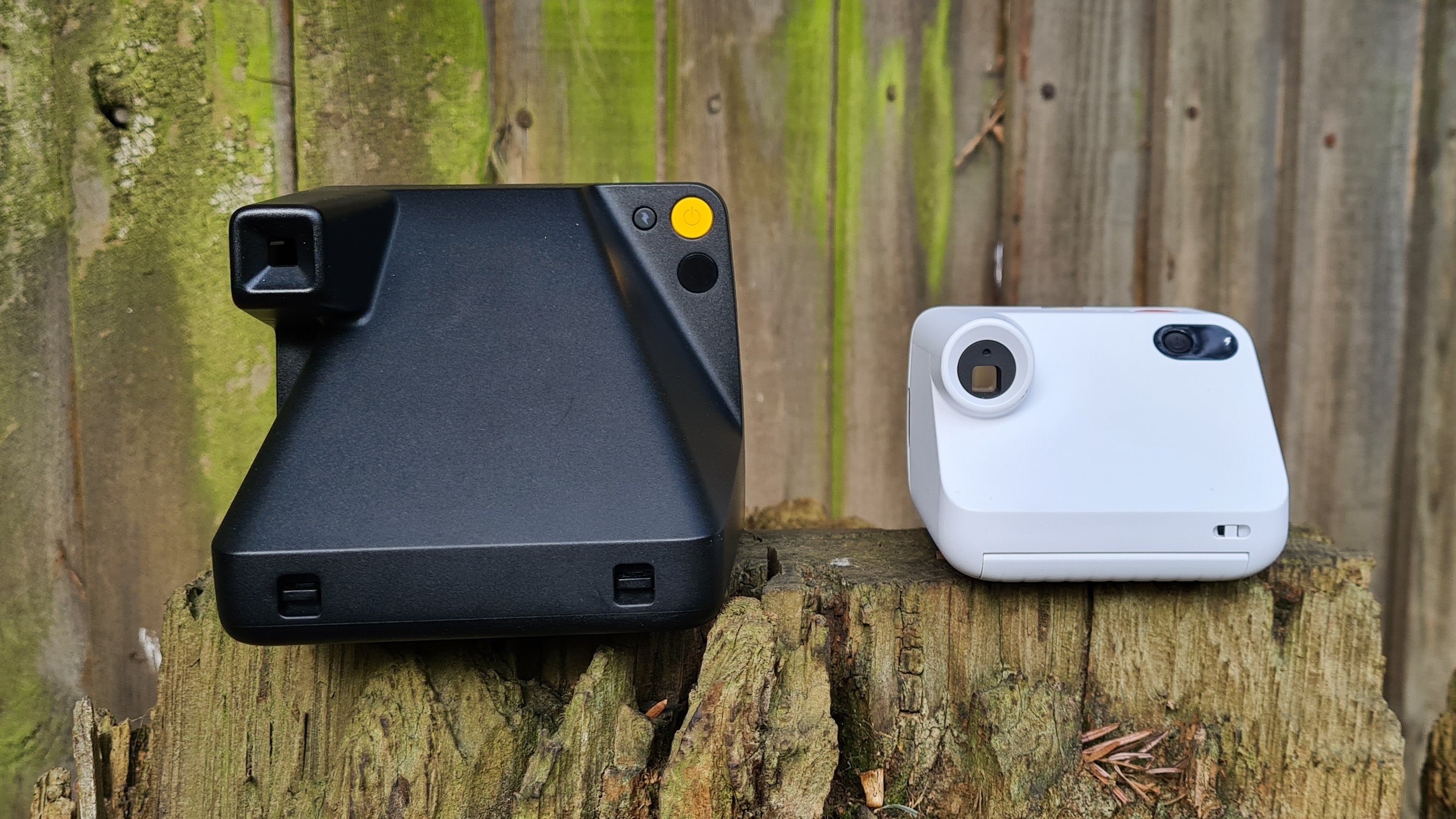
3. Autofocus
One of the Polaroid Now's standout features is autofocus, which takes a lot of the guesswork out of instant film. Most other entry-level instant cameras use fixed focus, or have a manual way of switching between distance and close-up shooting. A half-press of the shutter button will toggle between portrait and landscape lens elements, before a full press actually takes the photo, and should ensure the final image is crisp and detailed.
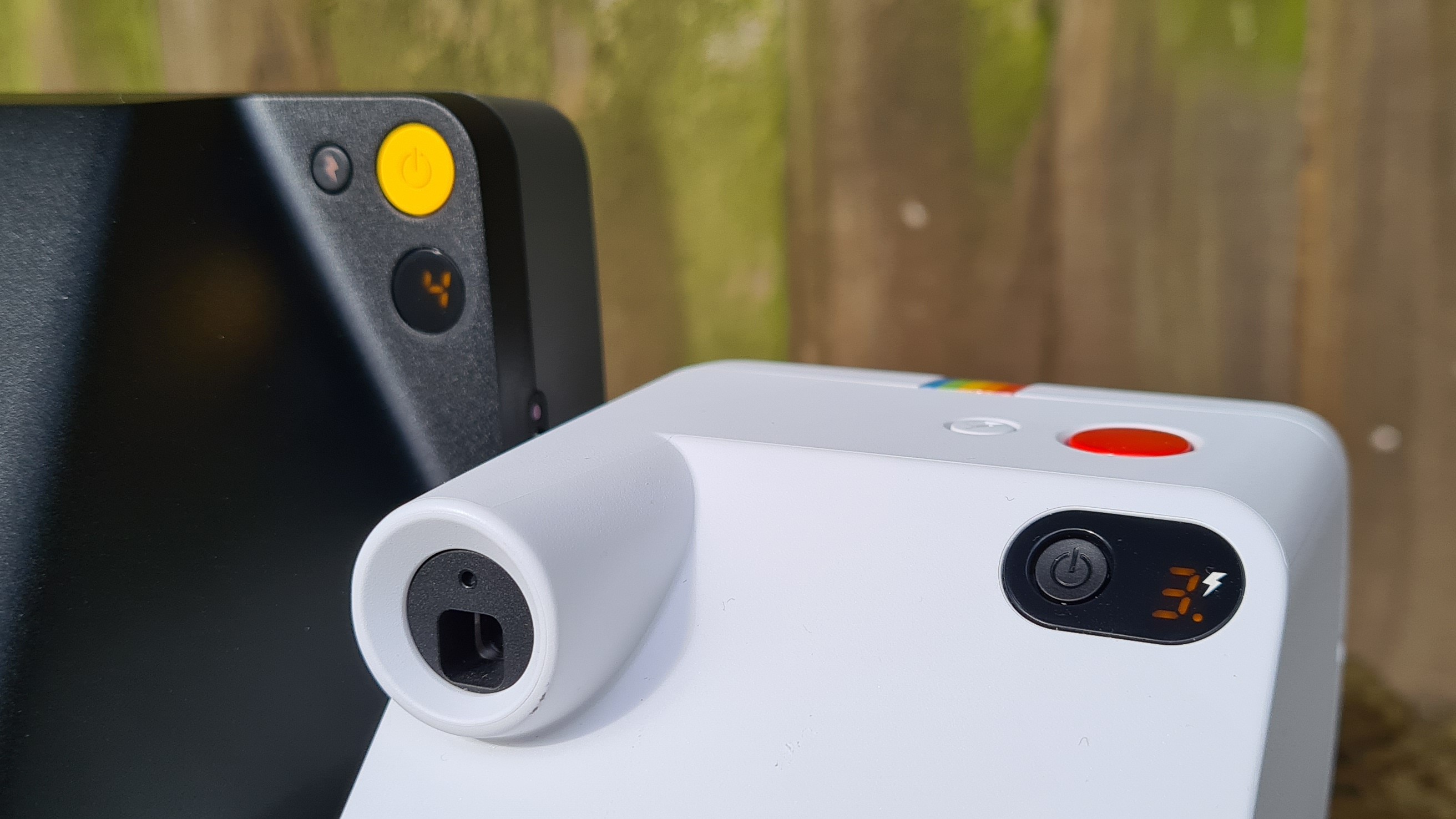
This function didn't make the cut for the Polaroid Go, which makes do with a fixed focus, two element lens. It’s calibrated to focus on subjects from 0.5m, which largely rules out close-ups and macro shooting. It also means you have to hold the camera as far as possible away from you when taking a selfie, in order to avoid a blurry final image.
- Read our in-depth Fujifilm Instax Mini 40 review
4. Design
At first glance, both Polaroids look very similar: each has a front-facing lens and flash, along with the iconic 'mouth' where photos are ejected. They have the same angular shape, too, with a protruding viewfinder and rear-facing power button, as well as a digital shot counter that illuminates when you power them on.
There are some layout differences, though. The Now's shutter button is located at the front, along with the dedicated self-timer button, and isn't especially ergonomic. The Go's shutter button is on the top edge, and the self-timer function has been incorporated into the button that controls the flash. It's far more comfortable to hold, either in one hand or two, and ensures you don't accidentally block the flash with your fingers.
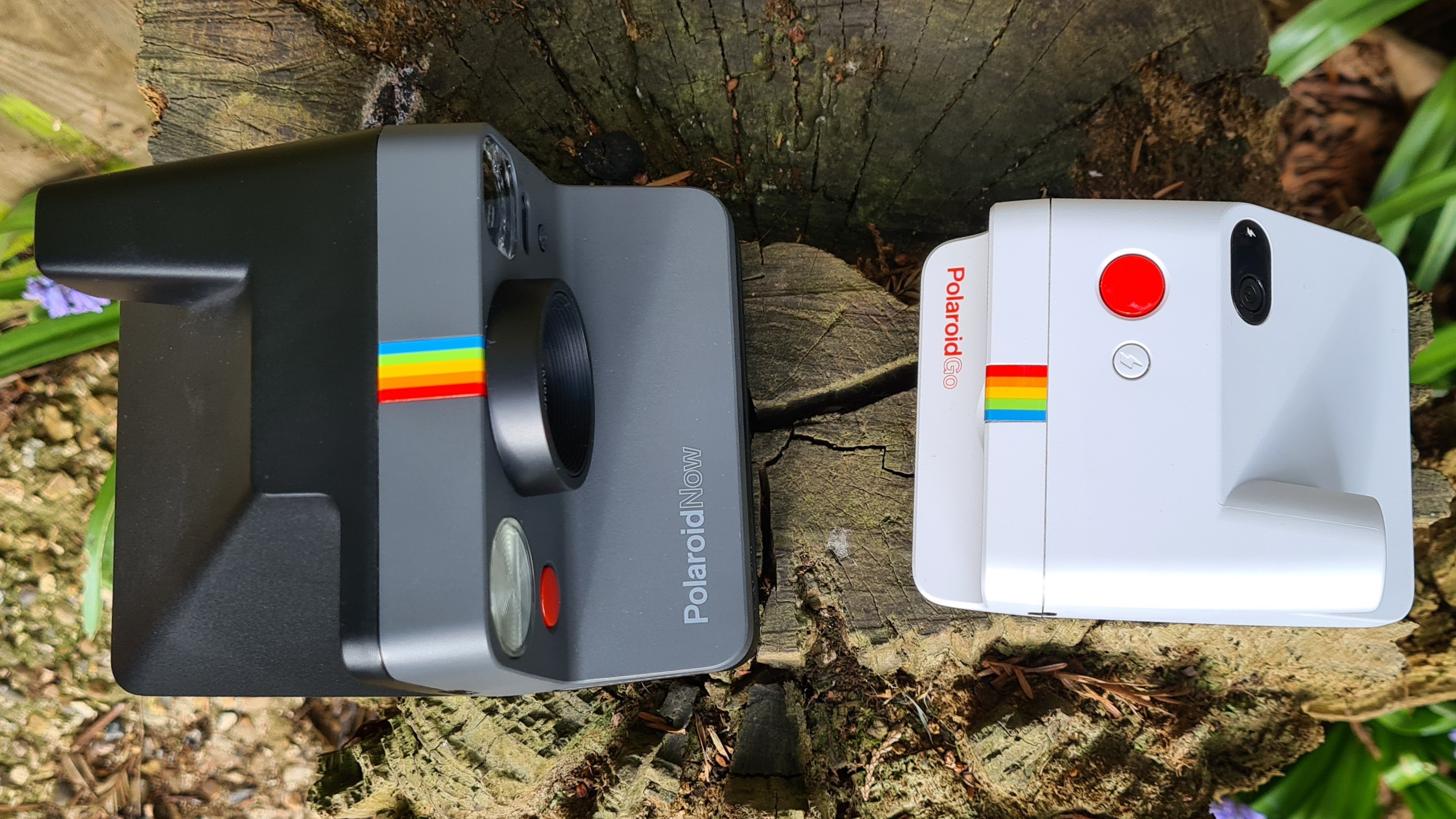
The Now's film drawer is opened with a button release, while the Go has a sliding catch door that swings out from the bottom of the camera. Both have the same microUSB charging port on the side, though, complete with an activity LED to let you know when the camera is at full battery.
Right now, the Polaroid Go is only available in white, with the brand's iconic five-color stripe and red power button adding some personality. The Now, meanwhile, is available in a whopping ten different color combinations.
5. Image quality
Both the Go and Now produce square aspect ratio images, which develop in around 10-15 minutes. Color reproduction is similar between the two film types, because they share the same chemical development process, but that doesn't mean image quality is identical.
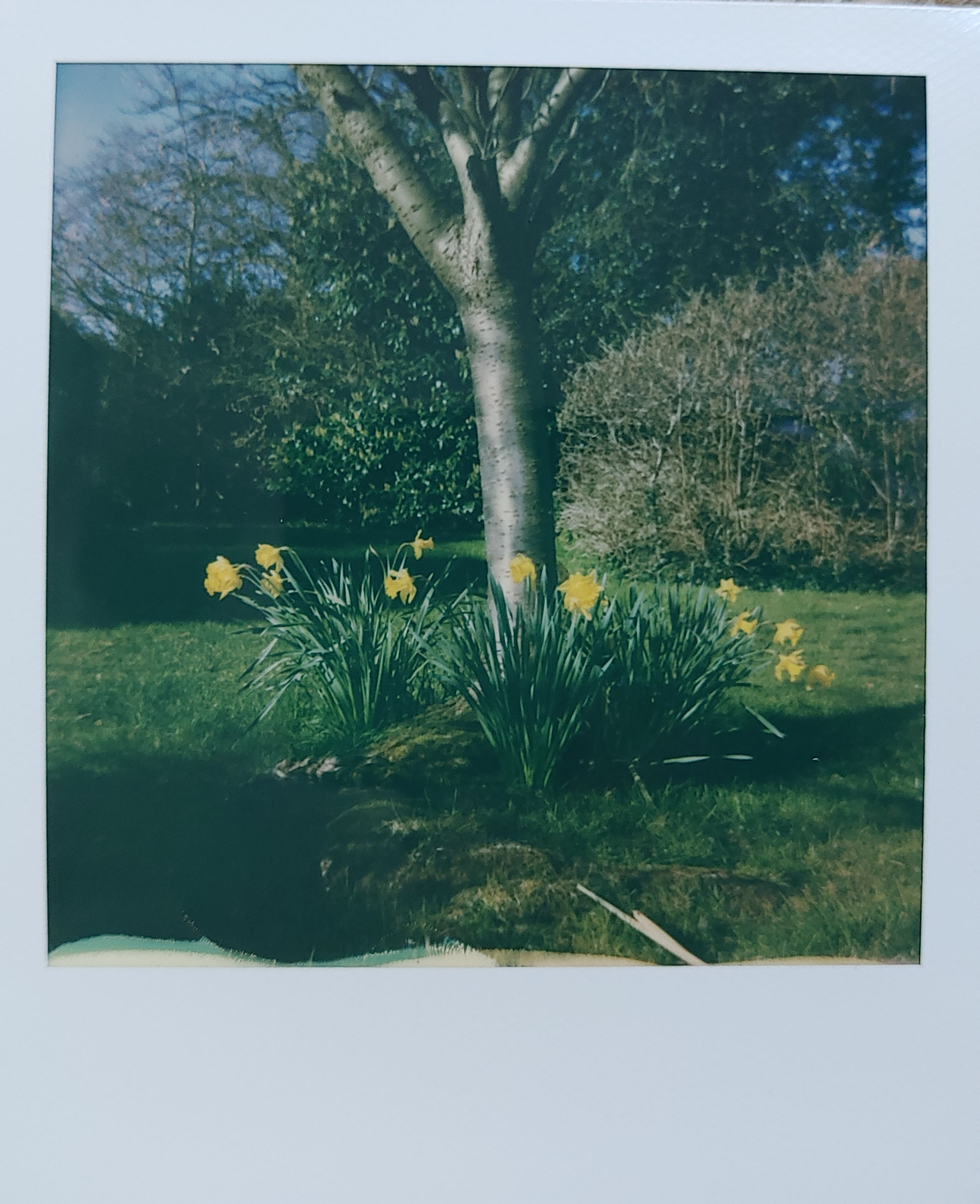
The larger Polaroid Now (above) copes better with bright sunlight, avoiding overexposure even when shooting towards the sun. It's not infallible, and direct sunlight will still blow out your images, but the results are often more usable here than they might be on the Go.
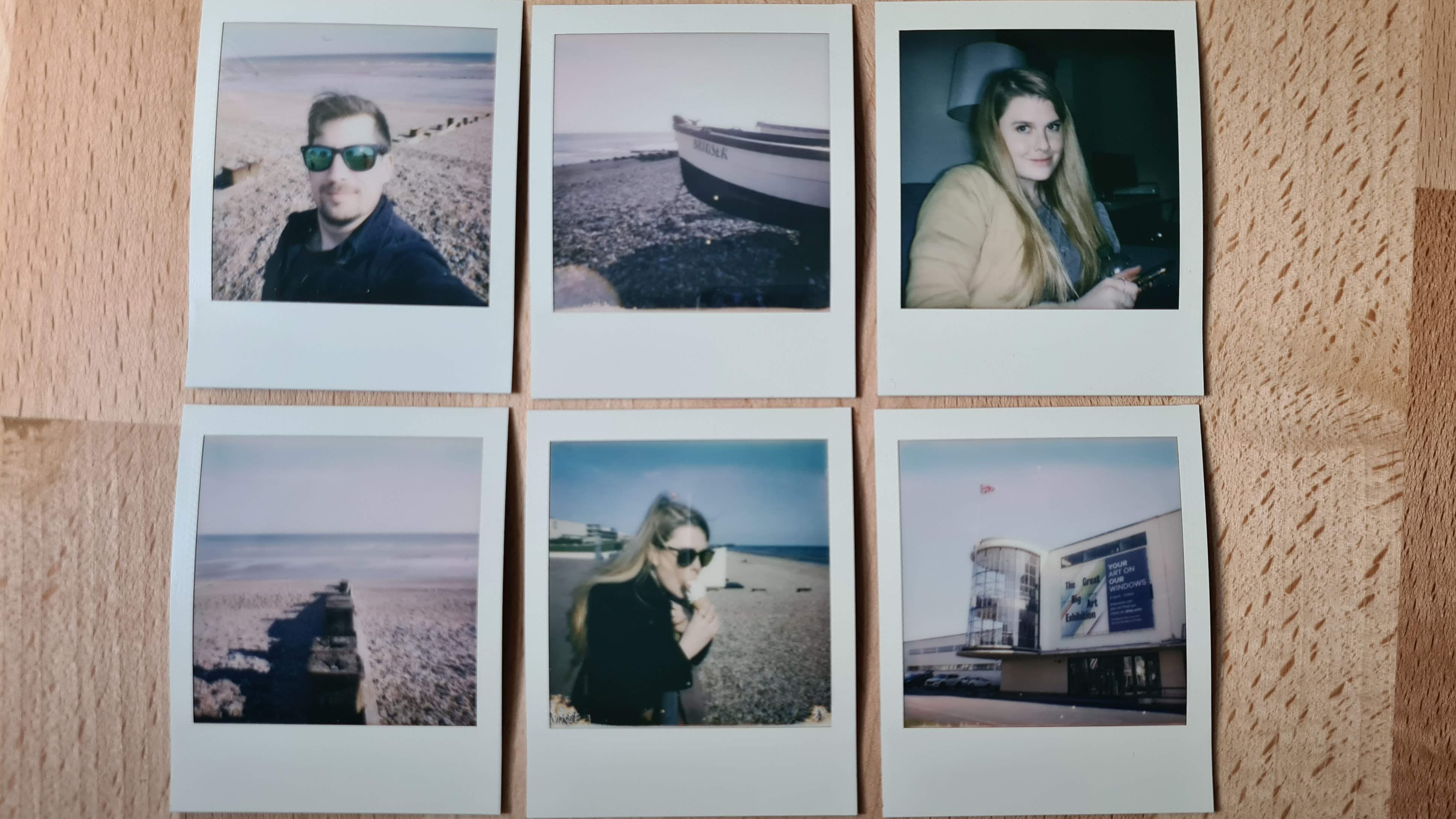
Indoors, both cameras rely on a flash to expose the scene, and it's essential in virtually all lighting conditions if you want to avoid leaving your subjects plunged in darkness. While they both use a vacuum discharge flash bulb, the Polaroid Now has a very slightly larger flash chamber. The differences are minimal, but the larger camera has a very slight edge here.
6. Price
Despite being a year older than its baby brother, the Polaroid Now has a very similar price tag to the Go. On its own, the Now costs $99.99 / £119.99 / AU$229.95, compared to the Go's tag of $99.99 / £109.99 / AU$199.95.
This doesn't include any film packs, though, which are obviously essential for anyone new to Polaroid. If you buy direct from Polaroid, the Polaroid Now's starter kit (which includes two color film packs and a single monochrome pack) costs $144.99 / £160.99, or in Australia you can simply get a free film pack when buying the Now.
At the time of writing, Polaroid's official website currently lists the Polaroid Go's Starter Set at $119.99 / £128.99, including two packs of film. In Australia, there currently isn't a Starter Set available, so you'll need to buy a double-pack of film for $36.95.
Film packs for the Go are also currently only available direct from Polaroid, though that is likely to change once the initial batch of Go pre-orders have reached customers' hands.
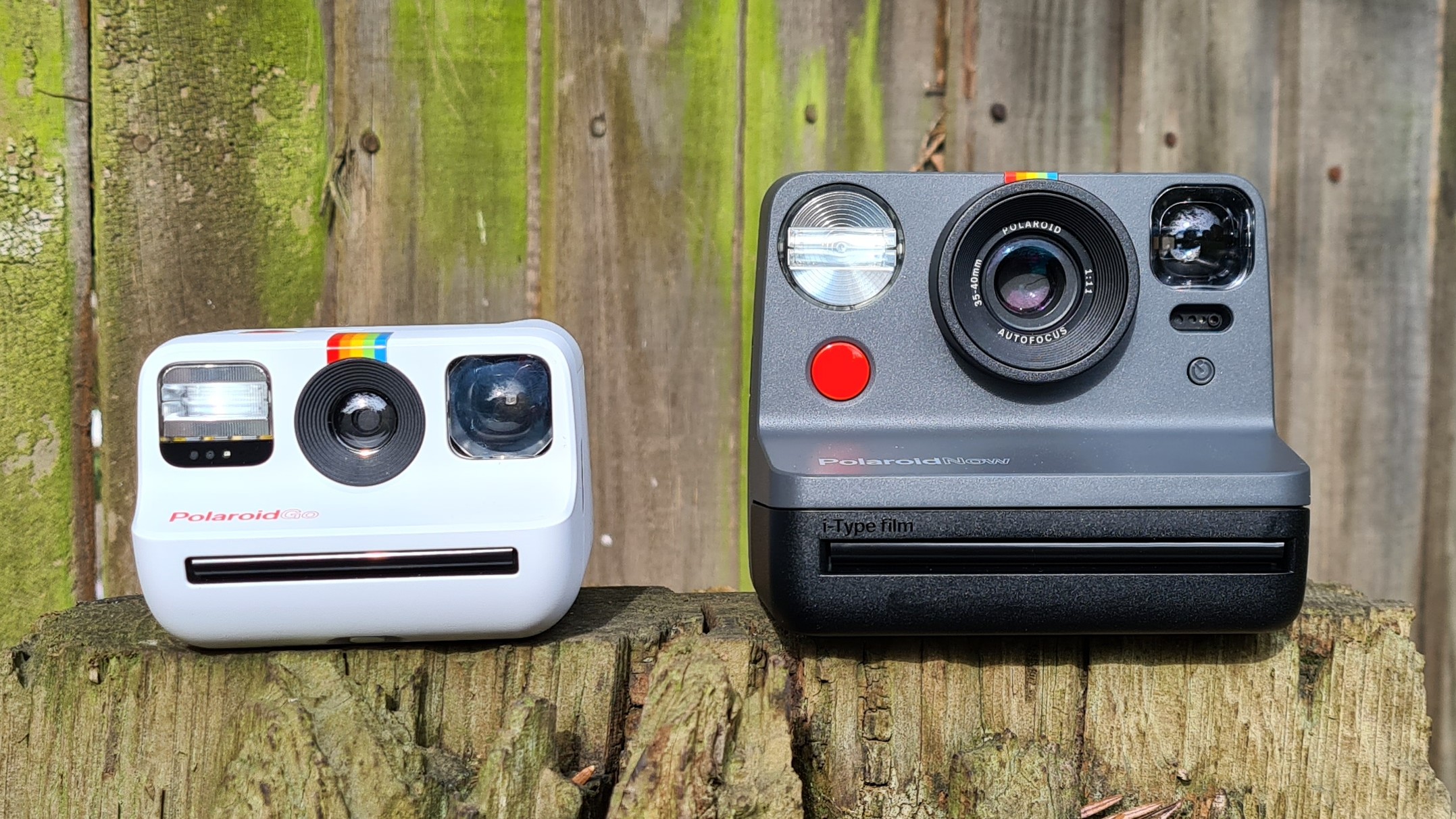
Polaroid Go vs Polaroid Now: which should you buy?
Polaroid didn't quite manage to squeeze all of the Polaroid Now's features into the smaller Go's form factor – that's why both cameras exist as different options.
Thanks to the inclusion of autofocus and a more powerful flash, the Now is the slightly more user-friendly of the two cameras. We're also a fan of its larger print size. But it's also worth asking yourself if it's bulkier form factor might limit the number of times you reach for it or take it out on trips.
If you're looking for an instant camera that you can take traveling or give to the kids, then the tiny Polaroid Go is likely the better choice for you – and one could work out slightly cheaper in the long run, once you've factored in the lower cost of its smaller film.
- Check out our Fujifilm Instax Mini 11 review
from TechRadar: Photography & video capture news https://ift.tt/2RCjtvi
via IFTTT






0 kommenttia:
Lähetä kommentti